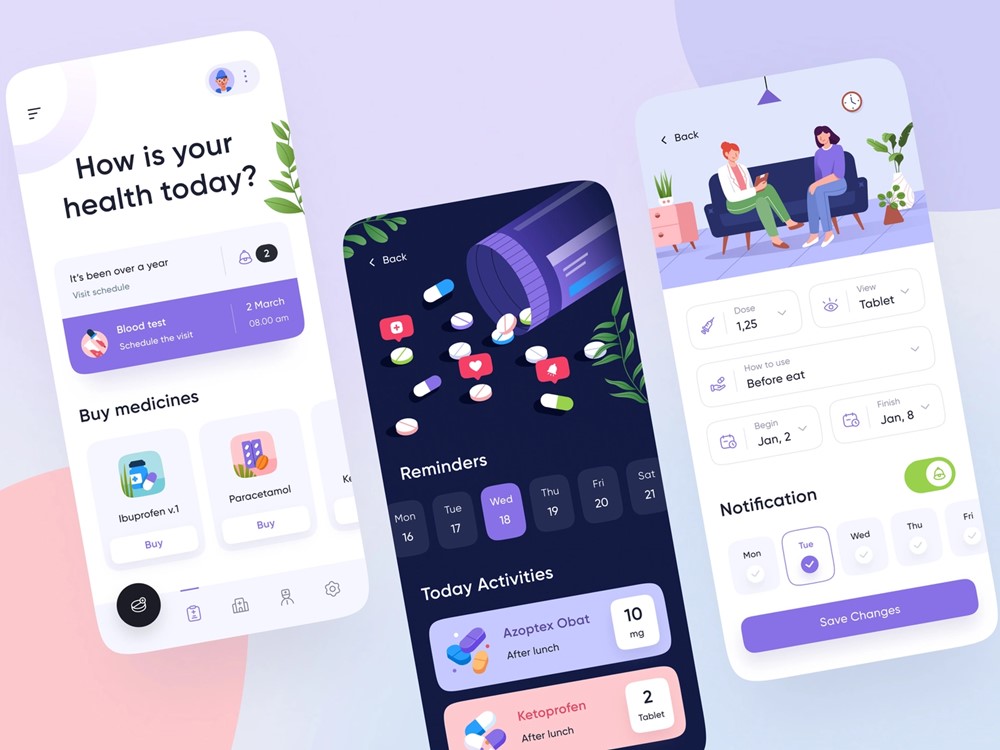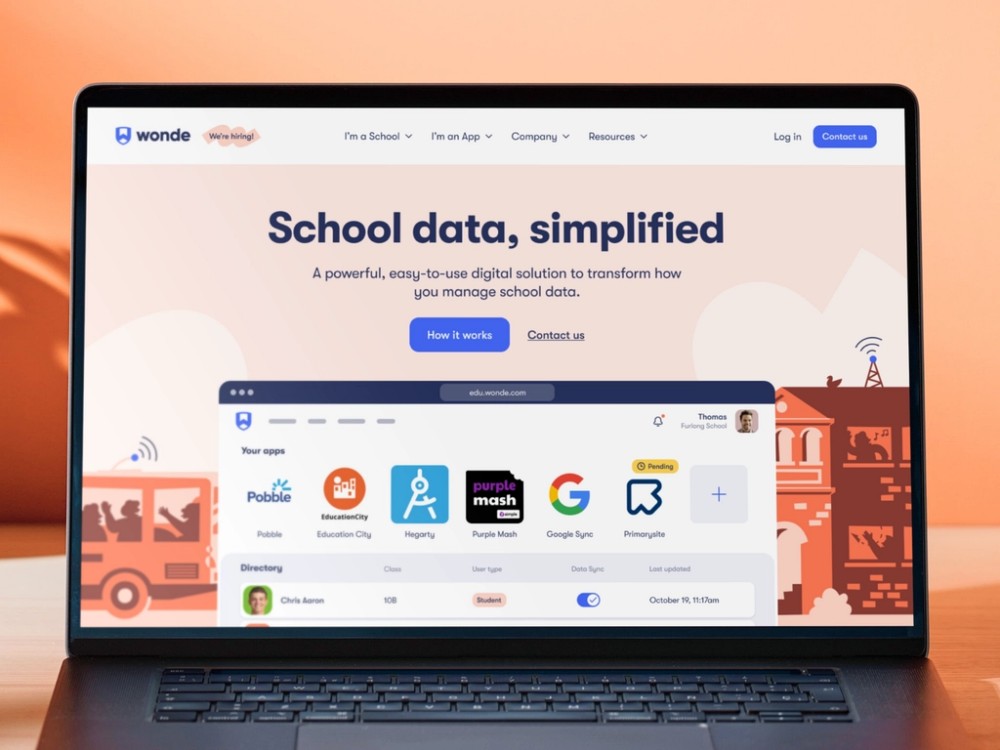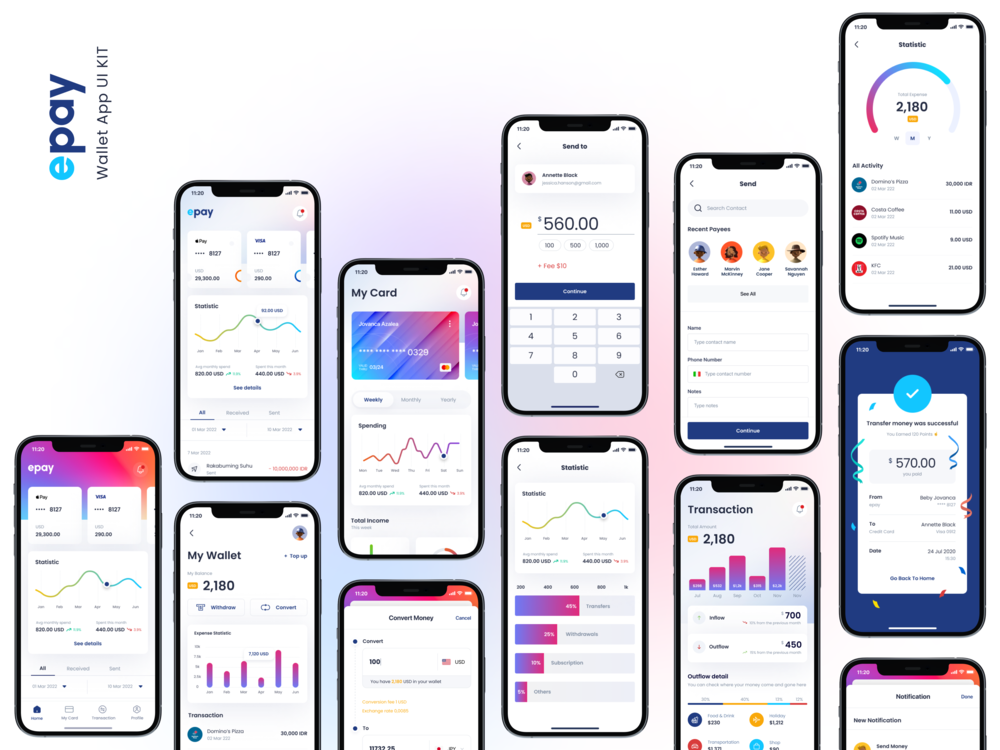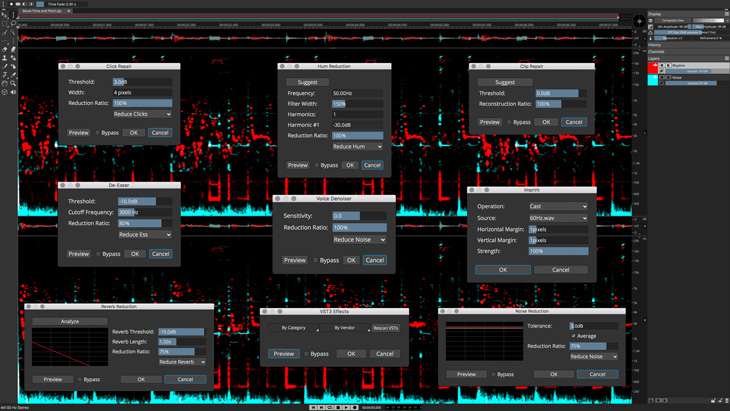In software program product growth, you by no means act on a hunch except you’re planning to fail. You at all times observe a step-by-step plan to maneuver from one stage to a different, ensuring you don’t slip as you proceed from an concept to an precise working product rollout. This plan underpins the whole Software program Growth Course of. Whereas it could fluctuate from vendor to vendor, it’s universally important to place issues so as when kicking off a brand new venture.
Observe us as we’ll go over the fundamentals of your Software program Growth Course of, how all the things goes throughout Software program Growth Life Cycle, and the 05 completely different administration methodologies out there on the market.
07 Phases in Software program Growth Life Cycle (SDLC)
You’re in all probability already conversant in the completely different steps within the SDLC for those who’re a venture supervisor. It’s essential to take into account all the things from necessities to stakeholder communication, growth, and ongoing upkeep because the shepherd of a digital venture.
These steps are basically the identical no matter which software program growth methodology you employ. Nonetheless, as we’ll see later, the order and sequence wherein they happen can fluctuate relying in your wants, targets, and the scale of your venture and staff (for instance, some steps is perhaps mixed, duplicated, or run in parallel).
1. Evaluation and Planning
As soon as a buyer or stakeholder has requested a venture, step one of the SDLC is planning. This normally means wanting into:
The planning part ensures you’re beginning off on the fitting foot. So attempt to ensure you embody all the departments that can be impacted by this venture, together with venture managers, builders, operations, safety, and key stakeholders.
You need to have sufficient data on the finish of the planning part to place collectively an in depth scope of labor (SOW). This plan particulars what’s being constructed, why, and the way you see it coming collectively.

2. Necessities
The subsequent step is to know the technical necessities of this venture. Each piece of software program, tech-stack, whether or not it’s an app, web site redesign, or new characteristic wanted to resolve a buyer drawback.
As you progress on from the planning part and proceed to fill out the SOW, ask your self and your IT Accomplice in case you are going for outsourcing route these questions in regards to the specifics round this venture, comparable to:
- What drawback does this remedy?
- Who’s going to make use of it and why?
- What kind of knowledge enter/output is required?
- Will you should combine with different instruments or APIs?
- How will you deal with safety/privateness?
As soon as the event staff will get the solutions, they’ll scope out technical necessities and testing phrases and resolve on a know-how stack. This part can also be the place you would possibly begin dash planning (for those who’re utilizing an Agile software program growth course of) or break down giant duties into extra actionable steps.
3. Design and Prototyping

With all the necessities in place, it’s time to start out designing what this software program will seem like and the way it will perform.
Relying on the software program growth course of you’re following, this part of the SDLC would possibly imply you create easy wireframes to indicate how interactions can be included or make extra full-fledged prototypes to check with customers. Alternatively, you would possibly resolve you want extra person suggestions and create a design dash to shortly get a characteristic or concept in entrance of your customers.
This stage helps your staff and consumer validate concepts and get priceless suggestions earlier than committing your ideas to code.
4. Software program Growth
With everybody on board with the software program’s proposed performance and design, it’s lastly time to construct it in keeping with the necessities and SOW. This part is clearly the toughest and probably riskiest stage of the SDLC (and every software program growth course of we’ll focus on beneath handles it in another way.) Nonetheless, whether or not you’re working in Agile sprints, constructing an MVP, or utilizing the extra conventional waterfall methodology, the aim is to stay to the SOW, keep away from deviating from the SOW, and create clear, environment friendly software program.
5. Testing
You’ll more than likely be testing, monitoring, and correcting points as your staff develops this system. Nonetheless, as soon as the options are finalized, and the product is said able to go, you’ll must conduct extra testing. This might entail giving the impact to a small group of beta testers or monitoring how customers have interaction with it utilizing UX instruments.
Whereas testing could also be a prolonged stage of the SDLC, it’s vital to keep away from promoting flawed software program to actual customers. Bugs might destroy your fame, price you cash, and, worst of all, take up hours of growth time that might have been spent on new options, as we defined in our information on bug monitoring instruments and workflows.
6. Deployment

Now that you simply’ve accomplished the heavy work and coding, it’s time to make your software program out there to your whole customers. Pushing your code into manufacturing is what we’re speaking about right here. It’s as much as your gross sales and advertising workers to provide you with and implement a go-to-market technique.
7. Upkeep and Updates
The SDLC isn’t over after your software program is launched into the open. Bear in mind the time period “lifecycle”? The top of 1 part heralds the beginning of the subsequent, and the identical is true for post-launch.
Buyer desires, and necessities change on a regular basis. Folks will certainly uncover points, search new options, and revel in extra or completely different performance after they start to make use of your software program. (To not point out primary utility and software program maintenance and upkeep to guarantee uptime and buyer happiness.)
All of those requests ought to be routed again to your product backlog of duties, the place they might be prioritized and included in your product roadmap.
05 Finest Software program Growth Processes (Methodologies)
Software program Growth Life Cycle (SDLC) is a step-by-step course of bringing a product’s idea from the ideation stage to implementation and finally to the market. Sometimes, the Software program Growth Life Cycle covers the next phases:
- Requirement evaluation
- Planning
- Software program design, comparable to architectural design
- Software program growth
- Testing
- Deployment
- Upkeep and Updates
The Waterfall framework launched the essential software program growth algorithm within the final century. The software program growth life cycle has developed considerably over time. Essentially the most important shift occurred within the Nineties when the Software program Growth Life Cycle shifted from Waterfall to Agile strategy.
The first objective of the Software program Growth Life Cycle is to supply high-quality software program growth throughout the time and worth constraints. Subsequently, software program growth procedures fluctuate relying on administration methodologies comparable to Waterfall or Agile. And we’re going to be taught extra in regards to the prime 05 Methodologies down beneath.
1. Waterfall
The Waterfall software program growth course of (also called the “linear sequential mannequin” or “Traditional lifecycle mannequin”) is among the oldest and most conventional fashions that’s utilized in constructing software program. In its most elementary kind, you’ll be able to consider the Waterfall methodology as following every step of the SDLC sequence and that you need to end each sequentially earlier than transferring on to the subsequent. Nonetheless, in most these days purposes, the phases overlap barely, with suggestions and knowledge being handed between every steps.
To many, this system is commonly often called the “plan-driven” course of as to finish a venture, you first must know all the things that must be completed and in what order. Therefore the identify “Waterfall” as every part flows into the subsequent one.
a/ Waterfall SDLC:
- Planning
- Necessities
- System and software program design
- Implementation
- Testing
- Deployment
- Upkeep/Updates
b/ Waterfall is greatest suited to:
Groups with strict group and documentation necessities
The Waterfall software program growth strategy works effectively when your targets, wants, and know-how stack are unlikely to bear important adjustments through the growth course of resulting from its rigid construction and important upfront planning time (comparable to throughout shorter one-off tasks).
In apply, the Waterfall strategy is greatest suited to bigger organizations (comparable to authorities companies) that demand sign-offs and documentation on all necessities and scope previous to the graduation of a venture.
c/ Waterfall isn’t greatest suited to:
When you’re testing a brand new product, want person suggestions in the course of growth, or wish to be extra dynamic in your growth course of, the Waterfall growth course of might be not for you.
Whereas easy, the principle drawback of this process is its lack of adaptability. You gained’t be producing and testing MVPs or prototypes whereas altering your thoughts. Because of this, except your scope is effectively acknowledged, it’s possible you’ll discover up committing to the fallacious path with out realizing it till launch day.
2. Agile and Scrum
The Agile software program growth course of (and its most outstanding methodology, Scrum) favors an iterative and dynamic growth strategy.
In distinction to the waterfall strategy’s tight, sequential move, cross-functional Agile groups work in “Sprints” of two weeks to 2 months to construct and distribute useable software program to clients for suggestions.
Agile is all about transferring shortly, releasing ceaselessly, and responding to the real calls for of your customers, even when it contradicts your preliminary technique. This implies you don’t want full necessities and an in depth SOW earlier than starting work. As an alternative, you’re successfully touring in a single path with the expectation of fixing path alongside the way in which.
Assume you’re growing a brand new characteristic for certainly one of your merchandise which will have X, Y, and Z options. Reasonably than spending months producing all the things, you’d create the naked minimal that’s each practical and usable (in what is named a “Agile Dash”) after which launch it to your customers.
This allows tighter suggestions loops all through the software program growth course of, permitting you to regulate and reply to actual client wants.
a/Agile SDLC:
- Product Backlog
- Dash backlog
- Dash (Design & Develop)
- Launch working software program
- Suggestions and validation (add to backlog)
- Plan subsequent dash
b/ Agile is greatest suited to:
Product adjustments are made frequently by dynamic groups
Agile is the software program growth course of most well-liked by most startups and know-how organizations for testing new merchandise or making continuous upgrades to current ones resulting from its dynamic and user-focused character.
Agile permits corporations to maneuver sooner and check theories with out jeopardizing their livelihood on a large launch that their customers despise, because it turns into simpler to carry out minor releases and acquire person enter. Moreover, as a result of testing happens after every tiny iteration, it’s simpler to observe defects or roll again to a earlier product model if one thing extra extreme breaks.
c/ Agile isn’t greatest suited to:
Groups working with extremely constrained budgets and schedules
However, as a result of Agile is dynamic, tasks can shortly transcend their preliminary timescale or finances, trigger points with current structure, or be derailed by mismanagement. This suggests it’s not essentially the most excellent choice for risk-averse or limited-resource organizations.
Moreover, using Agile and Scrum requires dedication and a radical understanding of the underlying methodology. That’s the reason it’s vital to have at the very least one dedicated Scrum grasp in your staff to make sure that sprints and milestones are met, and the venture doesn’t cease.
3. Incremental and Iterative
The incremental and iterative software program growth processes lay someplace between the construction and upfront planning of the Waterfall course of and the pliability of the Agile methodology.
Whereas each are primarily based on the precept of producing little bits of software program and exposing them to individuals for suggestions, they differ in what’s created throughout every launch.
Every “incremental” product development within the incremental software program growth methodology provides a rudimentary type of a brand new perform or characteristic. Contemplate creating an overarching technique, creating an MVP with merely the important performance, after which including options primarily based on suggestions.
Nonetheless, below the Iterative software program growth course of, every model launched features a rendition of all anticipated options. Contemplate making a v0.1 with essentially the most primary model of every characteristic after which upgrading it unexpectedly in v0.2, v0.3, and so forth.
a/ Incremental and Iterative SDLC
| Incremental Phases: |
|
| Iterative Phases: |
|
b/ Incremental and Iterative is greatest suited to:
Groups with particular necessities demand extra flexibility than the Waterfall method affords
Each give flexibility to your software program growth course of with out throwing out the first technique, making them glorious for big tasks with outlined targets (or groups with much less danger tolerance).
You acquire early suggestions in your core characteristic with the incremental methodology, which might help you show your small business case instantly. The iterative strategy, then again, offers customers an early view of what the ultimate product may very well be, permitting you to gather higher and extra focused enter.
In each circumstances, you’re speaking to customers early on about what they need, which can prevent time, cash, and complications in comparison with ready till later within the growth cycle.
c/ Incremental and Iterative isn’t greatest suited to:
Group that operates and not using a long-term know-how technique
Sadly, trying so as to add construction to a versatile methodology has its personal issues. Maybe your organization’s targets, methods, or applied sciences evolve with time, rendering earlier editions out of date or inoperable. Maybe your codebase has develop into cluttered and bloated resulting from including performance with out contemplating efficiencies.
Moreover, each approaches (notably the iterative strategy) necessitate intensive planning and structure growth early on. Because of this, they don’t seem to be appropriate for smaller tasks or groups who’re nonetheless evaluating use-cases and trying to determine product-market match.
4. V-Formed
The V-shaped software program growth course of is a twist on the standard Waterfall methodology that compensates for its essential flaw: an absence of testing. Reasonably than working sequentially by means of the event course of and leaving all testing till the tip, every stage of the V-shaped course of has a strict “validation and verification” step the place necessities are examined earlier than transferring on.
a/ V-Formed SDLC
- Necessities
- Specs
- Excessive-level design
- Low-level design
- Growth
- Unit testing
- Integration testing
- System testing
- Acceptance testing
b/ V-Formed is greatest suited to:
Smaller groups engaged on tasks with a restricted scope
Suppose you may have a small venture with comparatively exact (and static) necessities and scope. In that case, the V-shaped software program growth course of is good. As an alternative of risking following a plan solely to find flaws on the finish, it offers you loads of alternatives to check alongside the way in which.
c/ V-Formed isn’t greatest suited to:
Groups that require extra flexibility and early person enter
Even the best-laid plans go astray every now and then. And the method’ drawbacks are basically the polar reverse of its advantages.
For starters, you don’t have a lot management since you’re following a strict construction and testing schedule. You continue to run the chance of constructing the fallacious software program for your small business for those who don’t get early enter and suggestions out of your customers. Lastly, for those who’re engaged on something apart from a small, easy venture, it’s almost unattainable to create an in depth growth plan forward of time.
5. Spiral
The V-shaped course of’ give attention to testing and danger evaluation is mixed with the incremental nature of Iterative, Incremental, and Agile within the Spiral software program growth course of. As soon as a plan for a selected iteration or milestone has been established, the subsequent step is to conduct a radical danger evaluation to determine any errors or areas of excessive danger.
Let’s say you develop a characteristic that hasn’t been validated with clients as a part of your technique. You would create a prototype to check with customers earlier than transferring into the complete growth part, quite than simply including it to your present milestone. After every milestone is accomplished, the scope expands out (like a spiral), and you start planning and one other danger evaluation.
a/ Spiral SDLC
- Planning
- Danger Evaluation
- Growth and validation
- Consider outcomes and plan subsequent “loop”
b/ Spiral is greatest suited to:
Engaged on giant tasks with risk-averse groups
Clearly, the principle aim of such a process is to decrease danger. Following a path like this would possibly make sense for those who’re engaged on a big or vital venture requiring a lot documentation and validation. It’s additionally useful if a buyer isn’t positive precisely what they need and expects quite a lot of adjustments because the product develops.
c/ Spiral isn’t greatest suited to:
Nearly all of individuals
The spiral software program growth course of, whereas distinctive in precept, isn’t utilized in apply because of the time and prices related to taking such a measured strategy. As an alternative, it’s normally utilized for instance of the way to critically take into account an iterative growth technique.














